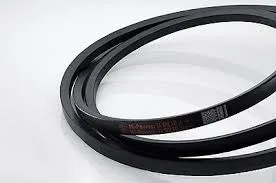- Arabic
- French
- Russian
- Spanish
- Portuguese
- Turkish
- Armenian
- English
- Albanian
- Amharic
- Azerbaijani
- Basque
- Belarusian
- Bengali
- Bosnian
- Bulgarian
- Catalan
- Cebuano
- Corsican
- Croatian
- Czech
- Danish
- Dutch
- Afrikaans
- Esperanto
- Estonian
- Finnish
- Frisian
- Galician
- Georgian
- German
- Greek
- Gujarati
- Haitian Creole
- hausa
- hawaiian
- Hebrew
- Hindi
- Miao
- Hungarian
- Icelandic
- igbo
- Indonesian
- irish
- Italian
- Japanese
- Javanese
- Kannada
- kazakh
- Khmer
- Rwandese
- Korean
- Kurdish
- Kyrgyz
- Lao
- Latin
- Latvian
- Lithuanian
- Luxembourgish
- Macedonian
- Malgashi
- Malay
- Malayalam
- Maltese
- Maori
- Marathi
- Mongolian
- Myanmar
- Nepali
- Norwegian
- Norwegian
- Occitan
- Pashto
- Persian
- Polish
- Punjabi
- Romanian
- Samoan
- Scottish Gaelic
- Serbian
- Sesotho
- Shona
- Sindhi
- Sinhala
- Slovak
- Slovenian
- Somali
- Sundanese
- Swahili
- Swedish
- Tagalog
- Tajik
- Tamil
- Tatar
- Telugu
- Thai
- Turkmen
- Ukrainian
- Urdu
- Uighur
- Uzbek
- Vietnamese
- Welsh
- Bantu
- Yiddish
- Yoruba
- Zulu
2 сар . 15, 2025 23:41 Back to list
tensioner belt pulley
The tensioner belt pulley plays a critical role in the smooth operation of an automobile's engine system, ensuring that the timing belt or serpentine belt maintains appropriate tension. This seemingly inconspicuous component is pivotal for optimal engine performance, and understanding its function, installation, and maintenance is crucial for both automotive professionals and enthusiasts.
Regular inspection and timely replacement of the tensioner belt pulley can prevent costly repairs and potential road hazards. Signs of wear include unusual noise from the engine, visible cracks on the pulley surface, and noticeable belt slippage. A squealing noise often indicates that the pulley bearings may be worn, necessitating immediate attention to avoid further complications. Some vehicles may include built-in indicators or wear marks that signal the need for pulley replacement, assisting with proactive maintenance. Offering the dual benefits of enhancing performance and extending engine life, upgrading to an after-market tensioner belt pulley can provide significant advantages. Higher-quality materials and advanced designs can offer improved durability and efficiency, particularly for high-performance vehicles or those subjected to challenging driving conditions. Consulting with automotive experts or trusted dealers can guide the selection of the most suitable pulley models for specific vehicle requirements. In an era where automotive technology continues to evolve rapidly, staying informed about components like the tensioner belt pulley ensures that drivers maintain their vehicles at peak efficiency. Professional advice and recommendations help establish trust and credibility, empowering consumers with knowledge that translates into practical benefits. Whether as part of routine maintenance or when troubleshooting performance issues, understanding the tensioner belt pulley's role fosters a deeper appreciation for the intricacies of engine mechanics and their impact on vehicular safety and dependability.


Regular inspection and timely replacement of the tensioner belt pulley can prevent costly repairs and potential road hazards. Signs of wear include unusual noise from the engine, visible cracks on the pulley surface, and noticeable belt slippage. A squealing noise often indicates that the pulley bearings may be worn, necessitating immediate attention to avoid further complications. Some vehicles may include built-in indicators or wear marks that signal the need for pulley replacement, assisting with proactive maintenance. Offering the dual benefits of enhancing performance and extending engine life, upgrading to an after-market tensioner belt pulley can provide significant advantages. Higher-quality materials and advanced designs can offer improved durability and efficiency, particularly for high-performance vehicles or those subjected to challenging driving conditions. Consulting with automotive experts or trusted dealers can guide the selection of the most suitable pulley models for specific vehicle requirements. In an era where automotive technology continues to evolve rapidly, staying informed about components like the tensioner belt pulley ensures that drivers maintain their vehicles at peak efficiency. Professional advice and recommendations help establish trust and credibility, empowering consumers with knowledge that translates into practical benefits. Whether as part of routine maintenance or when troubleshooting performance issues, understanding the tensioner belt pulley's role fosters a deeper appreciation for the intricacies of engine mechanics and their impact on vehicular safety and dependability.
Share:
Latest news
-
Korean Auto Parts Timing Belt 24312-37500 For Hyundai/Kia
NewsMar.07,2025
-
7PK2300 90916-T2024 RIBBED BELT POLY V BELT PK BELT
NewsMar.07,2025
-
Chinese Auto Belt Factory 310-2M-22 For BMW/Mercedes-Benz
NewsMar.07,2025
-
Chinese Auto Belt Factory 310-2M-22 For BMW/Mercedes-Benz
NewsMar.07,2025
-
90916-02660 PK Belt 6PK1680 For Toyota
NewsMar.07,2025
-
drive belt serpentine belt
NewsMar.07,2025

